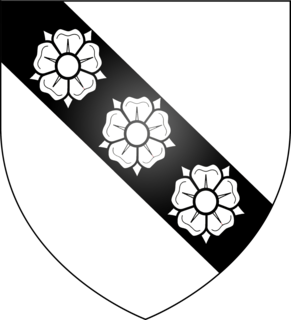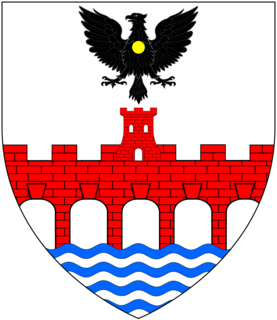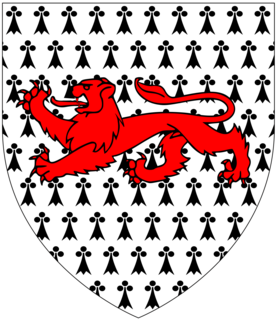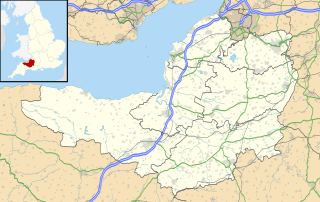The Percy–Neville feud was a series of skirmishes, raids, and vandalism between two prominent northern English families, the House of Percy and the House of Neville, and their followers, that helped provoke the Wars of the Roses. The original reason for the long dispute is unknown, and the first outbreaks of violence were in the 1450s, prior to the Wars of the Roses. The antagonists would later meet in battle several times during the feud.

William Faithorne, often "the Elder", was an English painter and engraver.

Heraldic visitations were tours of inspection undertaken by Kings of Arms throughout England, Wales and Ireland. Their purpose was to register and regulate the coats of arms of nobility, gentry and boroughs, and to record pedigrees. They took place from 1530 to 1688, and their records provide important source material for historians and genealogists.

Thomas Whitbread was an English Jesuit missionary and martyr, wrongly convicted of conspiracy to murder Charles II of England during the Popish Plot. He was beatified in 1929 by Pope Pius XI and his feast day is celebrated on 20 June.

Peter Sainthill of Bradninch in Devon, England, was twice elected a Member of Parliament for Tiverton in Devon, in the Short Parliament 1640 and in the Long Parliament in November 1640. He was a strong supporter of the Royalist side in the Civil War. He was "a man of culture and unaffected simplicity of character, (who) represents the Cavalier cause at its best". He was the subject of a lengthy Puritan verse satire, known as Peter's Banquet or The Cavalier in the Dumps, written circa 1645.

Roger de Clifford, 5th Baron de Clifford, ninth Lord Clifford, fifth Baron of Westmoreland, was the son of Robert de Clifford, 3rd Baron de Clifford, second son of Robert de Clifford, 1st Baron de Clifford (1273–1314), the founder of the northern branch of the family. His mother was Isabella, daughter of Maurice, 2nd Lord Berkeley. He succeeded his elder brother, Robert de Clifford, 4th Baron de Clifford in 1350, on which day he made proof of his age.

Huntsham is a small village and civil parish, formerly a manor and ecclesiastical parish, in the Mid Devon district of Devon, England. The nearest town is Tiverton, about 5.8 miles (9.3 km) south-west of the village. The parish is surrounded clockwise from the north by the parishes of Bampton, Hockworthy, Uplowman and Tiverton; it is bounded on the east by the River Lowman and by a minor road on Bampton Down to the north west, where it reaches a maximum height of 914 feet (279 m). In 2001 the population of the parish was 138, down from 222 in 1901.

George Francis Wyndham, 4th Earl of Egremont of Orchard Wyndham, Somerset and Silverton Park, Devon, was an English nobleman and naval officer.

Colonel William Strode, Jr — called William Strode of Barrington to distinguish him from contemporaries of the same name, principally the Strodes of Newnham in Devon — was an English Parliamentarian officer and Member of Parliament. A wealthy cloth merchant, he acquired several estates in his native county of Somerset and was noted for his local philanthropy as well as his political and military opposition to King Charles I and Charles II.

Doctor George Cary (1611–1680), Professor of Sacred Theology, lord of the manor of Clovelly, Devon, was Dean of Exeter between 1663 and 1680. He was also Rector of Clovelly and of Shobrooke in Devon and Chaplain in Ordinary to King Charles II. He was one of the Worthies of Devon of John Prince.
James Green (1771–1834) was an English artist, known as a portrait-painter.
Richard Newcourt was an English notary and historian, author of the Repertorium Ecclesiasticum Parochiale Londinense, a history of the diocese of London.

William Dickinson (1746–1823) was an English mezzotint engraver.

Duvale is a historic estate in the parish of Bampton, Devon. It is situated on a narrow flat plain in the steep-sided valley of the River Exe, 1 1/2 miles south west of the town of Bampton and 5 miles north of Tiverton, also on the River Exe further downstream. The name, given by Pole (d.1635) as Deu Vale, is said by him to signify "a valley of water". It was until the nearby construction of the present busy A396 road a place of exceptional seclusion and tranquility.

Sir Robert Spencer "of Spencer Combe" in the parish of Crediton, Devon, was the husband of Eleanor Beaufort (1431–1501), the daughter of Edmund Beaufort, 2nd Duke of Somerset (1406–1455), KG, and was father to two daughters and co-heiresses who made notable marriages.
The Manor of Clovelly is a historic manor in North Devon, England. Within the manor are situated the manor house known as Clovelly Court, the parish church of All Saints, and the famous picturesque fishing village of Clovelly. The parish church is unusually well-filled with well-preserved monuments to the lords of the manor, of the families of Cary, Hamlyn, Fane, Manners and Asquith. In 2015 the Rous family, direct descendants via several female lines of Zachary Hamlyn (1677–1759) the only purchaser of Clovelly since the 14th century, still own the estate or former manor, amounting to about 2,000 acres, including Clovelly Court and the advowson of the parish church, and the village of Clovelly, run as a major tourist attraction with annual paying visitor numbers of about 200,000.

Sir John Lethbridge, 1st Baronet (1746–1815), of Whitehall Place, Westminster; Sandhill Park, Somerset; Westaway in the parish of Pilton, Devon, and Winkleigh Court, Winkleigh, Devon, was Member of Parliament for Minehead in Somerset from 1806 to 1807. He served as Sheriff of Somerset in 1788–9. In 2010 he was discovered to have been the natural father of Claire Clairmont, and thus the grandfather of Lord Byron's daughter Allegra.

The Drewe family of Broadhembury were for many generations owners and inhabitants of The Grange, Broadhembury, Devon, in the west of England, from the 16th to 19th centuries.

David Hughson, which may have been a pen name of Edward Pugh, was a writer on the topography and history of London. He produced a description of the city based on "an actual perambulation" (walk) that was published in six volumes between 1805 and 1809 and contains 150 copper plate engravings principally based on illustrations by Robert Blemmell Schnebbelie and Edward Gyfford. He also produced works on topical matters such as the East India Company, religious subjects, and works of household management targeted at people of the "middling and genteel ranks of life".

The Battle of Marshall's Elm was a skirmish that took place near Street, in the county of Somerset, South West England, on 4 August 1642. The engagement occurred during the build-up to formal beginning of the First English Civil War on 22 August, while the Royalists and Parliamentarians were recruiting men in the county. The Royalists had established their regional headquarters in Wells, but were threatened by superior Parliamentarian numbers in the vicinity. The Royalist commander sent out a mounted patrol consisting of 60 to 80 cavalry and dragoons, which came across a force of between 500 and 600 Parliamentarian recruits travelling north across the Somerset Levels under the command of Sir John Pyne.

















